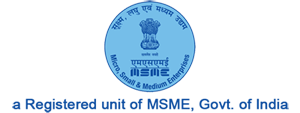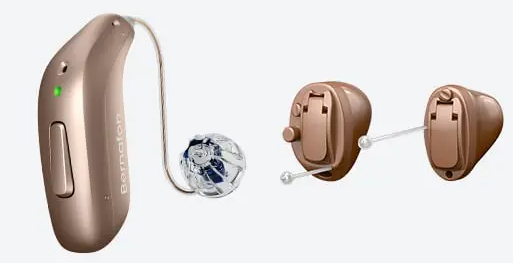9830074043 / 9088366638 / 9674366630 / 9674366632
Call Between 9:00 AM To 9:00 PM
CLICK HERE FOR HEARING AID PRICE



Publish Date : 2022-02-12 01:57:15
The hallowed halls of the Audiological Advancement Institute hummed with a quiet, purposeful energy. Dr. Eleanor Vance, a titan in the field of audiology, adjusted her spectacles and surveyed the assembled team. Today, they embarked on a mission: to dissect the nebulous notion of "best quality" when applied to hearing aids. It wasn't simply about decibels and frequencies, she reminded them, but about lives profoundly altered.
"Quality," she began, her voice resonating with authority and genuine care, "is a multifaceted gem. We must consider not just the technological prowess, but also the individual needs, the lifestyle, and the emotional well-being of the wearer."
The first lens through which they would examine quality, Dr. Vance declared, was **Acoustic Performance**. This encompassed several crucial aspects:
* **Sound Clarity and Naturalness:** The ideal hearing aid shouldn't just amplify sound; it should reproduce it faithfully. High-quality devices excel at minimizing distortion, ensuring that speech sounds clear and natural, not tinny or artificial. This requires sophisticated signal processing algorithms and carefully designed transducers. They would delve into the nuances of total harmonic distortion (THD) measurements and frequency response curves. Leading manufacturers like Starkey, with their "Real Ear Measurement" integration, and Oticon, known for their "OpenSound Navigator" technology, had made significant strides in this area. But raw data wasn’t enough. They needed to analyze subjective user reports, gathering testimonials on how naturally sounds were perceived in diverse environments.
* **Noise Reduction and Directionality:** The ability to filter out unwanted background noise is paramount. Cutting-edge hearing aids employ adaptive directional microphones that automatically focus on the speaker in front of the wearer while suppressing noise from other directions. Dr. Vance stressed the importance of comparing the efficacy of different noise reduction algorithms in challenging acoustic scenarios, such as crowded restaurants or windy outdoor settings. Phonak's "AutoSense OS" and Widex's "SoundSense Learn" were noteworthy examples of systems that learn and adapt to the wearer's environment. They planned to run comparative tests using simulated cocktail party noise and analyze the signal-to-noise ratio improvement provided by each device.
* **Feedback Cancellation:** The annoying whistle of feedback can render a hearing aid unusable. Modern hearing aids employ sophisticated feedback cancellation algorithms that detect and eliminate feedback before it becomes audible. The team would evaluate the robustness of these algorithms across different hearing loss profiles and ear canal anatomies. Resound's "DFS Ultra II" was a particularly strong contender in this area. They would simulate various ear canal shapes using acoustic manikins and assess the effectiveness of different feedback suppression strategies.
Next, Dr. Vance shifted the focus to **Technological Innovation**. Hearing aid technology was evolving at a breathtaking pace, and quality was inextricably linked to embracing these advancements.
* **Connectivity and Wireless Capabilities:** Bluetooth connectivity allows hearing aids to seamlessly connect to smartphones, televisions, and other devices, enabling direct audio streaming and remote control. This feature greatly enhances the user experience and provides unparalleled convenience. Signia's "Own Voice Processing" combined with Bluetooth connectivity offered a compelling example of how technology could personalize the hearing experience. The team would assess the stability and range of Bluetooth connections, as well as the compatibility of different hearing aids with various smartphone platforms.
* **Artificial Intelligence and Machine Learning:** AI is revolutionizing hearing aid technology, enabling devices to learn the wearer's preferences, adapt to changing environments, and even provide real-time translation. NuEar's "Voice iQ" and Unitron's "Discover Next" platforms were at the forefront of this trend. The team would investigate the ethical implications of using AI in hearing aids, ensuring that user data was protected and that algorithms were fair and unbiased.
* **Rechargeability:** Rechargeable hearing aids eliminate the need for disposable batteries, offering greater convenience and reducing environmental impact. Lithium-ion batteries provide long-lasting power and can be quickly recharged overnight. They would compare the battery life and charging times of different rechargeable hearing aids, as well as assess the longevity of the batteries over time.
The third crucial aspect of quality, according to Dr. Vance, was **Durability and Reliability**. A high-quality hearing aid should be built to withstand the rigors of daily life.
* **Water Resistance and Dust Protection:** Hearing aids are exposed to moisture and dust, which can damage delicate electronic components. Devices with high IP ratings (Ingress Protection) offer superior protection against these elements. The team would subject hearing aids to simulated rain and dust exposure, assessing their ability to withstand these conditions without malfunction.
* **Material Quality and Construction:** The materials used in hearing aid construction should be durable, hypoallergenic, and resistant to corrosion. The team would examine the quality of the plastics, metals, and other materials used in different hearing aids, as well as assess the overall build quality and fit and finish.
* **Warranty and Service:** A comprehensive warranty and readily available service are essential for ensuring long-term satisfaction. The team would compare the warranty terms offered by different manufacturers, as well as assess the responsiveness and helpfulness of their customer service departments.
Beyond the technical specifications, Dr. Vance emphasized the importance of **Personalization and Customization**. "The best hearing aid for one person may not be the best for another," she reminded them.
* **Hearing Loss Profile:** The hearing aid should be specifically programmed to match the individual's hearing loss profile, as determined by a comprehensive audiogram. The team would simulate different hearing loss profiles and assess the ability of different hearing aids to provide optimal amplification across the frequency range.
* **Lifestyle and Listening Needs:** The hearing aid should be appropriate for the wearer's lifestyle and listening needs. Someone who spends a lot of time in noisy environments will require a different type of hearing aid than someone who primarily listens in quiet settings. They would conduct mock interviews with simulated patients to assess their listening needs and recommend the most appropriate hearing aid styles and features.
* **Comfort and Fit:** The hearing aid should be comfortable to wear and fit securely in the ear. Ill-fitting hearing aids can cause discomfort, irritation, and even feedback. The team would evaluate the comfort and fit of different hearing aid styles, as well as assess the ease of insertion and removal.
Finally, Dr. Vance addressed the often-overlooked aspect of **Subjective User Experience**.
* **Ease of Use:** The hearing aid should be easy to use, even for individuals with limited dexterity or cognitive abilities. The team would evaluate the ease of adjusting volume, changing programs, and replacing batteries.
* **Cosmetics and Aesthetics:** Many people are concerned about the appearance of their hearing aids. Manufacturers are now offering a wide range of styles and colors to choose from, allowing wearers to select devices that are discreet and aesthetically pleasing. They would conduct surveys to assess user perceptions of the cosmetics and aesthetics of different hearing aid styles.
* **Overall Satisfaction:** Ultimately, the best measure of quality is user satisfaction. The team would conduct long-term follow-up studies to assess the overall satisfaction of hearing aid wearers, as well as identify any problems or issues that may arise over time.
Dr. Vance concluded, "Determining the 'best quality' hearing aid is an ongoing process, requiring a combination of rigorous testing, objective analysis, and a deep understanding of individual needs. It's not a destination, but a journey. And our responsibility, as audiologists, is to guide our patients on that journey, empowering them to rediscover the joy of hearing and to live richer, more connected lives." The team, inspired and re-energized, dispersed to their labs, ready to embark on their quest, armed with knowledge and a shared commitment to excellence. Their dedication echoed Dr. Vance's sentiment: the true measure of quality lay not just in the technology, but in the profound impact on human lives.
Share with:
![]()
![]() Tweet
Tweet
![]()

